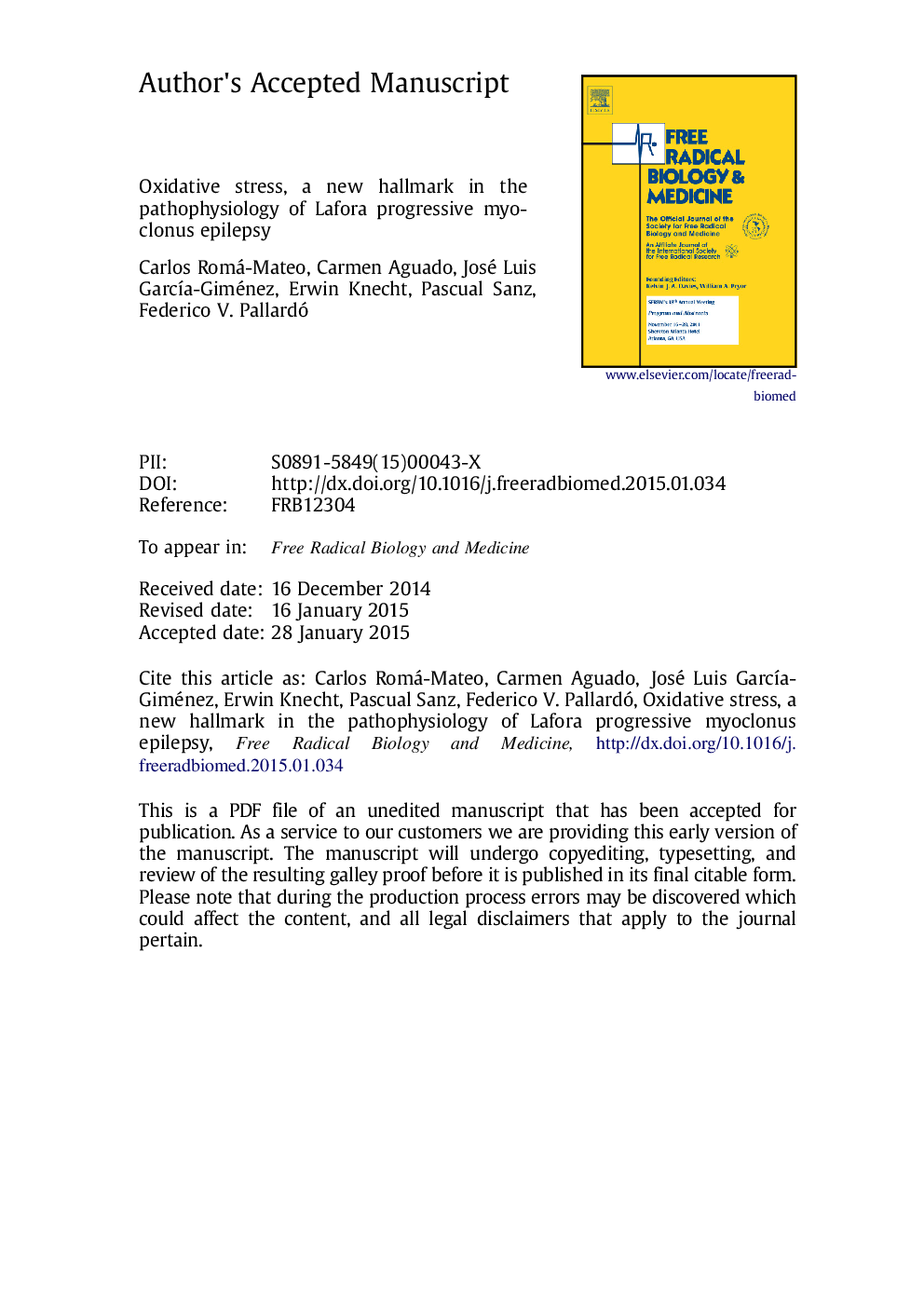| Article ID | Journal | Published Year | Pages | File Type |
|---|---|---|---|---|
| 10737883 | Free Radical Biology and Medicine | 2015 | 39 Pages |
Abstract
Lafora disease (LD; OMIM 254780, ORPHA501) is a devastating neurodegenerative disorder characterized by the presence of glycogen-like intracellular inclusions called Lafora bodies and caused, in most cases, by mutations in either the EPM2A or the EPM2B gene, encoding respectively laforin, a phosphatase with dual specificity that is involved in the dephosphorylation of glycogen, and malin, an E3-ubiquitin ligase involved in the polyubiquitination of proteins related to glycogen metabolism. Thus, it has been reported that laforin and malin form a functional complex that acts as a key regulator of glycogen metabolism and that also plays a crucial role in protein homeostasis (proteostasis). Regarding this last function, it has been shown that cells are more sensitive to ER stress and show defects in proteasome and autophagy activities in the absence of a functional laforin-malin complex. More recently, we have demonstrated that oxidative stress accompanies these proteostasis defects and that various LD models show an increase in reactive oxygen species and oxidative stress products together with a dysregulated antioxidant enzyme expression and activity. In this review we discuss possible connections between the multiple defects in protein homeostasis present in LD and oxidative stress.
Related Topics
Life Sciences
Biochemistry, Genetics and Molecular Biology
Ageing
Authors
Carlos Romá-Mateo, Carmen Aguado, José Luis GarcÃa-Giménez, Erwin Knecht, Pascual Sanz, Federico V. Pallardó,
